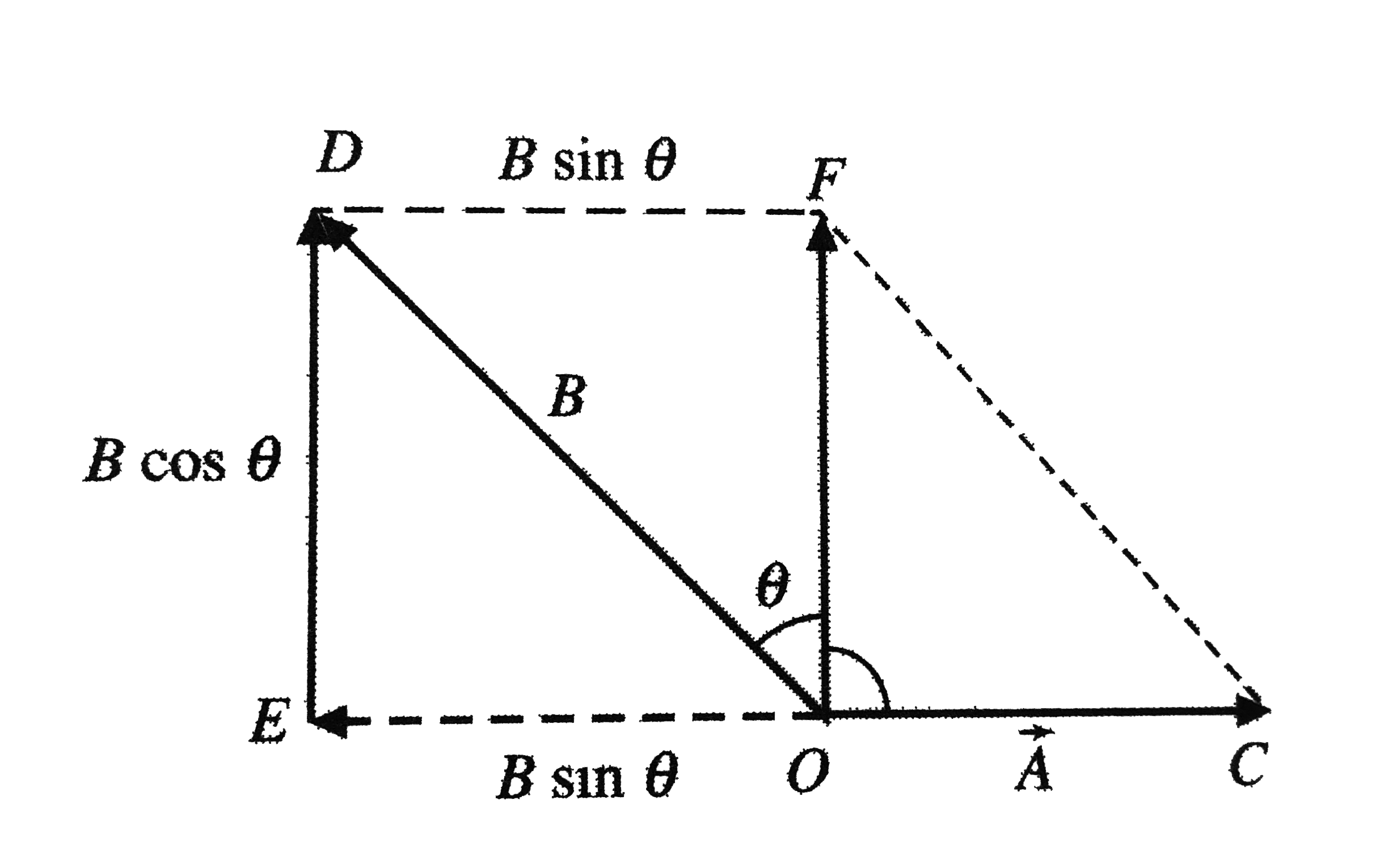Two vectors →A and →B have equal magnitudes. The magnitude of (→A+→B) is n times the magnitude of (→A−→B). The angle between →A and →B is :
Video Solution
Text Solution
∣∣→A+→B∣∣=n∣∣→A−→B∣∣
2Acosθ2=n2Asinθ2(A=B)
∴tanθ2=1n,θ2=tan−1(1n),θ=2tan−1(1n)
|
Topper's Solved these Questions
- MOTION IN A PLANEBook:AAKASH SERIESChapter:MOTION IN A PLANEExercise:SHORT ANSWER TYPE QUESTIONS
Explore 6 Videos
- MOTION IN A PLANEBook:AAKASH SERIESChapter:MOTION IN A PLANEExercise:VERY SHORT ANSWER TYPE QUESTIONS
Explore 10 Videos
- MOTION IN A PLANEBook:AAKASH SERIESChapter:MOTION IN A PLANEExercise:EXERCISE-3 (Circular Motion)
Explore 7 Videos
- MOTION IN A STRAIGHT LINE Book:AAKASH SERIESChapter:MOTION IN A STRAIGHT LINE Exercise:very Short answer type question
Explore 15 Videos
Similar Questions
Knowledge Check
If ∣∣→A×→B∣∣=→A.→B then the angle between →Aand→B is :
A0Bπ4Cπ2DπIf →a.→b =ab then the angle between →a and →b is
Aπ/2BπCzeroDany angle between zero and πThe angle between →a×→band→b×→a is
AZeroBπCπ/2Dπ/4
The maximum value of magnitude of (→A−→B) is
View SolutionTwo vectors →A and →B have magnitude in the ratio 1:2 respectively. Their difference vector has as magnitude of 10 units, and the angle between →A&→B is 120∘ . The magnitude of →Aand→B are :
View SolutionThe resultant of two vectors →A and →B is perpendicular to the vector →A and its magnitude is equal to half of the magnitude of the vector →B. Find out the angles between →A and →B.
 .
.
View SolutionIf ∣∣→A×→B∣∣=∣∣→A⋅→B∣∣, then the angle between →Aand→B will be :
View SolutionIf ∣∣→a×→b∣∣=ab then the angle between →aand→b is
View Solution
